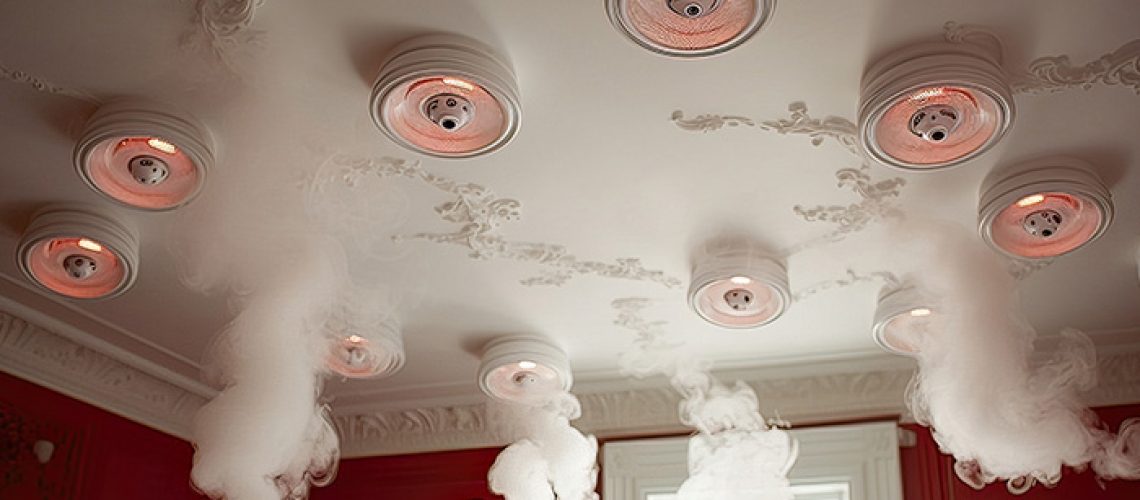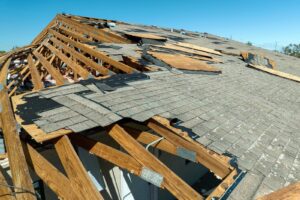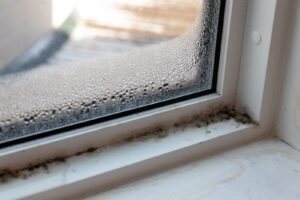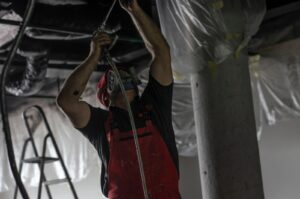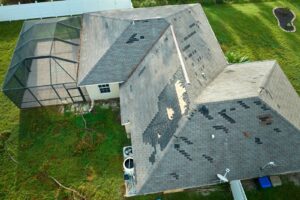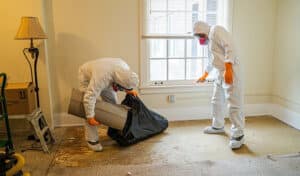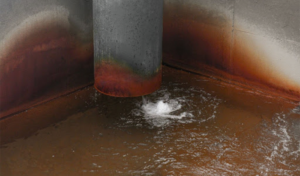Imagine a tranquil night disrupted by the piercing sound of a smoke detector, alerting you to a danger that lurks unseen. The rapid response it prompts could mean the difference between a minor incident and a life-altering tragedy.
Smoke detectors stand as silent, ever-vigilant guardians ready to sound the alarm at the first sign of trouble, providing crucial moments that could safeguard both lives and property. But how do we ensure the position of these vital devices is optimal, diligently maintained, and ready to perform when every second counts?
This comprehensive guide will illuminate the path to effective smoke detector utilization, exploring the nuances of different types, explaining optimal placement, and providing a beacon of knowledge to navigate installation, testing, and replacement.
Importance of Smoke Detectors
Imagine a fire unexpectedly breaking out in your residence or place of business. The initial moments are crucial for safeguarding property and, more importantly, preserving lives.
Herein lies the quintessential role of a smoke detector: to promptly alert you and your cohabitants or colleagues at the earliest inception of a fire, affording precious time to evacuate, implement safety protocols, or possibly extinguish the fire before it proliferates.
Smoke detectors are life-saving devices, significantly reducing the risk of fatality in fire incidents.
According to the National Fire Protection Association (NFPA), the risk of dying in reported home structure fires is 55% lower in homes with working smoke alarms than in homes with no alarms or none that worked. This statistic underscores the vital role that smoke detectors play in enhancing safety.
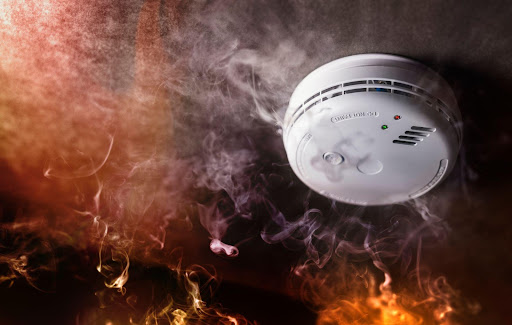
Why Smoke Detector Placement Matters
Your smoke detector’s efficacy is inextricably linked to its placement. Proper positioning ensures that the detection of smoke, and consequently the activation of the alarm, occurs at the earliest possible juncture, maximizing the available time to respond to the potential danger.
Placing a smoke detector close to kitchens or bathrooms, for instance, may result in frequent false alarms due to steam and cooking smoke, potentially leading to complacency or delayed response in the event of an actual fire. Conversely, detectors placed too far from potential sources of fire may not activate promptly, diminishing their effectiveness.
Legal Requirements for Smoke Detector Placement
Adherence to legal stipulations for smoke detectors is not merely a matter of compliance but is pivotal for ensuring the safety of inhabitants. Various jurisdictions have specific regulations for installing and maintaining smoke detectors.
For instance, in some regions, it is mandatory to have a smoke detector on every level of a home and outside sleeping areas. Moreover, certain areas may require the installation of smoke detectors inside each bedroom and mandate that all detectors be interconnected, ensuring that if one alarm is triggered, all alarms throughout the property will sound.
Insurance Considerations for Smoke Detector Placement
From an insurance perspective, smoke detectors’ presence and proper maintenance can be influential. Some insurance companies offer premium discounts for homes with smoke detectors, recognizing the reduced risk of extensive fire damage in properties with early warning systems.
Furthermore, in the unfortunate event of a fire, the presence and proper use of legally mandated smoke detectors may influence claims, particularly if negligence regarding fire safety can be ruled out.
Understanding Smoke Detectors
Of course, proper placement is essential, but so is understanding how smoke detectors work. Let’s look at the types of smoke detectors, how they work, and how to maintain them.
Types of Smoke Detectors
There are six types of smoke detectors: ionized, photoelectric, dual-sensor, heat, smart, and combination smoke and carbon monoxide detectors.
- Ionization smoke detectors: These smoke detectors use a small amount of radioactive material to ionize the air in the sensor chamber, thereby detecting smoke. They are particularly effective at detecting fast-moving fires that produce smaller smoke particles, such as flaming fires. These smoke detectors are prone to false alarms from cooking smoke or high humidity.
- Photoelectric smoke detectors: These smoke detectors employ a light beam and a sensor that detects smoke when particles obstruct the beam and scatter light on the sensor. These smoke detectors are great for smoldering fires but aren’t as good at detecting fast-moving fires.
- Dual-sensor smoke detectors: These smoke detectors integrate ionization and photoelectric technologies to detect a wide range of fires. They detect fast-moving and smoldering fires, offering comprehensive coverage.
- Heat detectors: These smoke detectors sense the temperature rise and activate the alarm when reaching a specific temperature or a rapid temperature increase occurs. Heat detectors are great for kitchens since they are not sensitive to smoke particles, reducing the risk of a false alarm.
- Smart smoke detectors: These smoke detectors use ionization or photoelectric sensing integrated with smart technologies to send alerts to mobile devices. This allows you to know what’s going on in your home, even when you’re not there.
- Combination smoke and carbon monoxide detectors: These detectors combine smoke detection with carbon monoxide detection, providing dual protection against fires and carbon monoxide poisoning.

Guidelines for Smoke Detector Placement
Placing smoke detectors effectively is crucial for maximizing their ability to provide early warnings during a fire. Here are some general placement rules and guidelines to consider:
1. Location
- Bedrooms: Install a smoke detector in every bedroom or sleeping area.
- Hallways: Place detectors in hallways that lead to sleeping areas.
- Each level: Ensure that at least one smoke detector is installed on every level of the home, including the basement and attic.
- Living areas: Consider placing detectors in living rooms and dens.
- Near stairways: Stairways can act as chimneys for smoke and heat, so placing detectors nearby is prudent.
2. Positioning
- Ceiling placement: Since smoke rises, detectors should typically be mounted on ceilings.
- Wall placement: If wall mounting is necessary, install the detector no more than 12 inches from the ceiling.
- High-peak ceilings: Place the detector within three feet of the highest point, measured horizontally for vaulted or peaked ceilings.
3. Avoidance areas
- New cooking appliances: Place smoke detectors at least 10 feet away from cooking appliances to minimize false alarms.
- Bathrooms: Avoid placing detectors too close to bathrooms (at least 10 feet away) to prevent steam from triggering false alarms.
- Near vents and windows: Avoid areas where drafts could interfere with the detector’s operation.
4. Special considerations
- Interconnected alarms: For enhanced safety, consider using interconnected smoke alarms, so when one alarm sounds, all alarms in the property do.
- Accessibility: Ensure that all detectors are easily accessible for testing and maintenance.
- Visibility: Place detectors where they are easily seen to facilitate regular checks for the indicator light.
5. Additional placement tips
- Large spaces: Consider using additional smoke detectors for large rooms or areas to ensure comprehensive coverage.
- Garage and workshops: Placing a detector here is advisable due to the potential fire risk in these areas.
- Basements: Install smoke detectors on the ceiling at the bottom of the stairs leading to the next level.
Ensuring that smoke detectors are strategically placed and maintained is pivotal in optimizing their efficacy in providing timely alerts in the event of a fire, safeguarding both lives and property.
Always refer to specific guidelines from your local authorities and the detector manufacturer to ensure optimal placement and compliance with regulations.
Installing Smoke Detectors
- Choose the right location: Refer to the general placement rules discussed previously to select optimal locations.
- Gather materials: You will typically need a drill, screws, wall plugs, a ladder, and the smoke detector unit.
- Install mounting bracket: Use the drill to create holes in the ceiling or wall, insert wall plugs, and secure the mounting bracket with screws.
- Attach the detector: Attach the smoke detector to the mounting bracket. Depending on the model, this might involve twisting it into place or securing it with additional screws.
- Activate the detector: Insert the battery (if it’s not a hard-wired model) and remove any tabs to activate the unit.
Testing Smoke Detectors
- Regular testing: Test the smoke detector monthly by pressing the “test” button on the unit.
- Smoke test: Occasionally, perform a smoke test using a smoke detector tester spray, ensuring the alarm sounds when smoke is detected.
- Check indicator lights: Ensure that any indicator lights (such as power and alarm lights) function as per the user manual.
- Test interconnected alarms: If your detectors are interconnected, ensure that triggering one alarm activates all others on the property.
Replacing Smoke Detectors
- Determine replacement time: Smoke detectors should generally be replaced every 10 years or per the manufacturer’s guidelines.
- Remove the old detector: Detach the old unit from its mounting bracket and disconnect any power sources.
- Install the new detector: If it is compatible with the existing mounting bracket and wiring, attach it directly. If not, you may need to install a new bracket or rewire the connections.
- Test the new detector: Ensure the new unit functions correctly by performing a test as described above.
Additional Tips
- Battery replacement: Even if the detector is functioning well, replace the batteries at least once a year or when the low-battery indicator sounds.
- Cleaning: Regularly clean the detector per the manufacturer’s instructions to prevent dust and debris from impairing functionality.
- Record keeping: Maintain a log of testing, battery replacements, and any issues to ensure regular maintenance.
- Avoid paint: Never paint over a smoke detector, as it might impede its function.
- User manual: Always refer to the user manual for model-specific installation, testing, and maintenance instructions.
So, there you have it!
Now you understand the importance of smoke detectors, where to place them, and how to install, repair, and maintain them.
But what do you do in the event of an actual fire?
Call Restoremasters Today.
When the smoke clears in the aftermath of the alarm, navigating through the remnants of a fire is a daunting, emotional journey. Restoremasters is here to light the path toward recovery and restoration.
Our dedicated team, armed with expertise in managing smoke and fire damage, stands ready to assist you in reclaiming your space and peace of mind.
From assessing damage to meticulously restoring your property, we ensure that the echoes of a fire incident are thoroughly silenced, allowing you to move forward with confidence and security.
Don’t navigate the aftermath alone; let Restoremasters be your steadfast partner in turning ashes into rejuvenation. Connect with Restoremasters today, and together, let’s masterfully restore your property and the safety and serenity of your sanctuary.
Call us at 801.948.2478, or contact us through our website to schedule your restoration service today.

